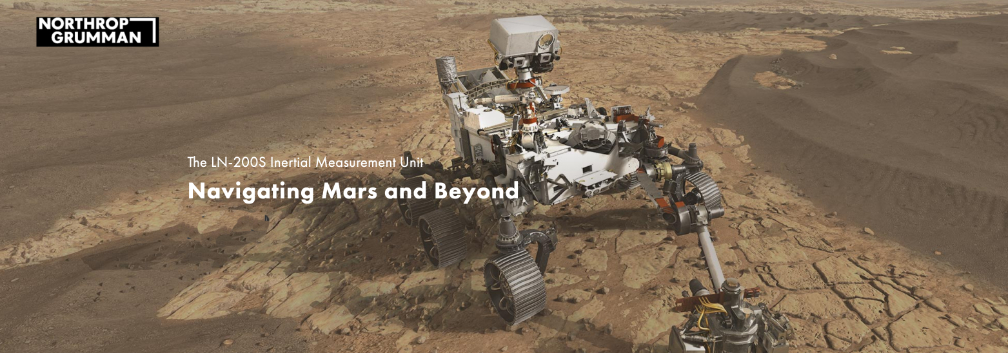
Northrop Grumman Corporation (NYSE: NOC) provided key navigation and critical components to support NASA Jet Propulsion Laboratory’s Perseverance Rover, which landed on Mars’ Jezero Crater today, February 18, 2021.

The Perseverance Rover (above) uses Northrop Grumman’s LN-200S inertial measurement unit (IMU) to provide attitude and acceleration information for guidance, as well as pressurant tanks for the Rover’s gas dust removal tool (gDRT) and propellant tanks for the Rover’s controlled descent element. The company has provided mission critical components on all previous Mars Rovers missions, including 2003’s Spirit and Opportunity, and 2012’s Curiosity.
“Our longstanding support of NASA’s Mars Rover missions has provided vital components for these vehicles for many years,” said Lindsay McEwen, VP, Navigation and Positioning Systems, Northrop Grumman. “The LN-200S brings critical navigation capabilities to the Perseverance Rover, and delivers top reliability that has helped to extend previous Mars Rover missions for years beyond their expected length.”
 The LN-200S is a highly reliable, low cost and lightweight IMU that features three fiber optic gyroscopes and three silicon Micro Electro-Mechanical Systems (MEMS) accelerometers and maintains performance, even in the most demanding environmental conditions.
The LN-200S is a highly reliable, low cost and lightweight IMU that features three fiber optic gyroscopes and three silicon Micro Electro-Mechanical Systems (MEMS) accelerometers and maintains performance, even in the most demanding environmental conditions.
Northrop Grumman’s tanks enable the Rover’s gDRT to blow away dust particles after grinding rock samples to allow a better look at the polished sample surface. The propellant tanks used on the Rover’s descent element deliver hydrazine propellant for the controlled descent onto the Martian surface as well as propellant tanks used on the cruise stage during transport from Earth to Mars.
The Perseverance Rover mission will last at least one Mars year, or about 687 Earth days. It will study the habitability of Mars and will specifically seek biosignatures of past life, collect core samples of the surface and test oxygen production in the atmosphere. Additionally, the Perseverance Rover will test technologies to aid in future human exploration.
